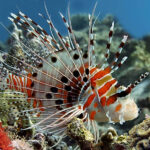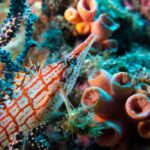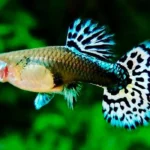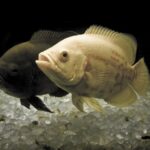Surgeonfish you are snorkelling in crystal-clear, azure water. Sunlight dances through the waves, lighting a kaleidoscope of life below. A burst of electric blue snaps across your eye. It moves quickly, looks great, and is insanely bright. That, my friend, is a tang, possibly the most stunning image of the sea. Surgeonfish The sea’s paintbrushes are tangs, or surgeonfish, as they are scientifically known.
The beauty of these colorful flashes through coral reef waters cannot be matched.

The Tang Family Tree
How Many Species Are There?
There are about 80 recognized species in the Acanthuridae family, and they fall into several genera. The following are the most popular among aquarium enthusiasts: Surgeonfish
Paracanthurus (e.g., Blue Tang)
Acanthurus (e.g., Powder Blue Tang, Achilles Tang)
Zebrasoma (e.g., Yellow Tang, Sailfin Tang)
Ctenochaetus (e.g., Kole Tang)
Each has its own look and temperament, but they all share a few common traits: Surgeonfish laterally compressed bodies, small mouths, and that ever-famous scalpel-like tail spine.
Tangs are built for agility
Tangs are built for agility. Their oval, compressed bodies allow them to zip in and out of tight coral structures, avoiding predators with ease. Their dorsal and anal fins provide stability, and their strong pectoral fins are used for precise steering.
The Scalp of the Tail
What really sets tangs apart is the presence of a scalpel-like spine on either side of their tail base. The name “surgeonfish” derives from this. These spines can be razor sharp and are used for defense, especially during territorial disputes.
Tangs should be handled with care, even by divers and aquarists, as these blades have the ability to cut through an opponent’s skin. Despite their grace and beauty, they pack a dangerous secret—nature’s hidden defence system.
Ocean Fashion Icons: Coloration and Camouflage
One of the main reasons tangs are so adored is their stunning color palette.
Their colors aren’t just for show — they serve real evolutionary purposes:
Camouflage to blend in with coral and avoid predators.
Territorial displays — bright color changes signal aggression or dominance.
Courtship rituals — during mating, colors may intensify.
Notable showstoppers include:
Royal Blue Tang: Deep blue with a bold black palette design and yellow tail.
Yellow Tang: Brilliant, banana-yellow body — often used in beginner reef tanks.
Kole Tang: Earthy tones with orange spots — more subdued but highly elegant.
Powder Blue Tang: Sky blue body with black facial mask and bright yellow dorsal fin.
Where They Live: Natural Habitat and Distribution
Common habitats include:
Coral reefs: Where algae are abundant.
Lagoons and shallow rocky areas provide shelter and feeding grounds.
Reef slopes and drop-offs: For larger, more mobile species.
Countries rich in tangible biodiversity include
Philippines, Indonesia, Maldives, Australia, Hawaii, and parts of East Africa.
Fascinating Anatomy: More Than Meets the Eye
Scalpel-like spines on either side of the tail — sharp, retractable, and used for defence.
Small mouths with bristle-like teeth are ideal for grazing.
Laterally flattened bodies aid agility in tight reef spaces.
Slime coat covering their body — a protective layer that reduces friction and fends off parasites.
Their digestive systems are long and specialized, designed to handle fibrous algae.

Social Butterflies or Solitary Soldiers?
Social behavior varies by species:
Some tangs are solitary, defending a patch of reef as their territory.
Others are schooling species, forming shoals for protection and foraging efficiency.
Interesting behaviors:
Color changes at night — many tangs “fade” in color when sleeping to avoid predators.
Flash coloration during combat or mating — rapid color shifts to assert dominance.
Tangs Surgeonfish in Aquariums: A Dream and a Challenge
Tangs are highly popular in marine aquariums, but they are not beginner fish.
Their stunning colors make them desirable, yet they come with specific requirements:
Large tanks: Minimum of 75–120 gallons, depending on the species.
High oxygen levels and stable water parameters.
Plenty of swimming space and hiding spots.
UV sterilizers and pristine water quality to avoid diseases.
Commonly kept species:
Yellow Tang
Kole Tang
Blue Tang (Dory)
Tomini Tang
Sailfin Tang
Compatibility:
Best kept with peaceful to semi-aggressive tank mates.
Avoid housing multiple tangs unless in a very large tank.
Be cautious mixing tangs of similar shape or size.
Feeding Tangs Surgeonfish: What’s on the Menu?
In the wild, tangs are primarily herbivores.
They graze continuously on algae and seaweed throughout the day.
In captivity, their diet must reflect this natural behavior:
Marine algae sheets (e.g., Nori)
Spirulina-based pellets and flakes
Blanched vegetables like zucchini, spinach, and lettuce
Occasional protein: Mysis shrimp, brine shrimp for variety
Feeding tips:
Feed small amounts multiple times a day.
Use algae clips to mimic natural grazing.
A varied diet helps enhance coloration and immune health.
Health and Common Ailments
Surgeonfish Common ailments include
Marine Ich (Cryptocaryon irritans): White spots, scratching against objects.
Lateral Line Erosion (HLLE): Erosion of the head and lateral line, often due to poor diet or water quality.
Fin rot and fungal infections
Prevention:
Quarantine new arrivals.
Keep water parameters stable (temperature, salinity, ammonia, nitrates).
Provide a balanced diet and regular tank maintenance.
Breeding: Nature’s Mystery
Breeding tangs in home aquariums is extremely rare and difficult.
Most tangs are broadcast spawners:
Males and females release gametes into the water column at dusk.
Fertilization happens externally, and larvae drift in the plankton before settling on reefs.
In captivity:
Successful captive breeding has occurred in commercial operations (notably for yellow tangs).
Requires large, specialized systems and careful control of water parameters and lighting.

Breeding: Nature’s Mystery
Breeding tangs in home aquariums is extremely rare and difficult.
Most tangs are broadcast spawners:
Males and females release gametes into the water column at dusk.
Fertilization happens externally, and larvae drift in the plankton before settling on reefs.
In captivity:
Requires large, specialized systems and careful control of water parameters and lighting.
Conservation Concerns: Beauty at Risk?
Overcollection for the aquarium trade and habitat destruction pose threats to tang populations.
Coral bleaching and climate change also impact their natural environment.
Responsible fishkeeping involves:
Supporting captive-bred specimens when possible.
Avoiding wild-caught fish from stressed populations.
Pop Culture: Tangs in the Spotlight
On social media, tangs are popular “show fish” in reef tanks, with hobbyists proudly sharing their vibrant colors and health tips.
Many aquarists refer to tangs as “oceanic unicorns” for their beauty and mystique.
Tips for Aspiring Tang Keepers
Want to keep a tang? Here’s a checklist before diving in:
Minimum 75–120 gallons (depending on species)
Strong filtration system with skimmer
Live rock for grazing and hiding
High flow circulation
Quarantine all new arrivals
Feed a varied, algae-rich diet
Research species compatibility
Start with hardy options:
Yellow Tang
Kole Tang
Tomini Tang
Avoid starting with blue tang unless experienced — they are prone to Ich and stress.
A Future with Tangs: Preservation Through Education
Tangs are more than aquarium ornaments — they are indicators of reef health.
Protecting them involves
Reducing pollution and plastic in the oceans
Supporting coral reef restoration
Practising ethical fishkeeping
Educating others about their role in the ecosystem
Each time you see a tang in a reef or tank, remember: you’re witnessing a living jewel of the sea.

Conclusion
Tangs and surgeonfish are more than they appear to be, pretty faces on a coral reef. They are elegant swimmers, conscientious grazers of algae, and living testament to the ocean as full of mystery, intellect, and color. Surgeonfish Their striking patterns and intriguing behavior encourage us to see beyond — to learn not just how they make it, but why they exist.
Whether you saw them in a dive excursion first, glimpsed them in an aquarium, or encountered “Dory” at the movies, tangs leave an indelible mark. Surgeonfish’s vibrant presence is a subtle reminder of the fine line between reef ecosystem life and death.
As aquarists, as divers, as ocean lovers who can only see them from afar, we have a duty to safeguard these ocean wonders. That is, to make wise decisions, to back reef conservation efforts, and to never assume the magic of the sea will forever remain ours.
For when we defend tangs and the coral reefs where they live, we are saving not only a species — we are keeping a part of our planet’s heart alive.
FAQs
Are Surgeonfish good fish for beginner aquariums?
Not quite. While they’re stunning and popular, tangs need a lot of swimming space, excellent water quality, and a stable environment. They may be susceptible to diseases like marine ich and sensitive to stress. They work best for experienced aquarists who have large saltwater tanks that have been around a long time.
Why do tangs have “scalpels” on their tails? Are they dangerous?
What a great query! Tangs use their razor-sharp, retractable spines near the base of their tails for both dominance and defense. Despite the fact that they typically do not attack humans, handling these spines can result in painful cuts. Always be careful and use the right tools.
Why is the blue tang also called the “palette surgeonfish”?
Surgeonfish The name “Palette Surgeonfish” comes from its striking coloration — bright blue with black lines and a yellow tail, which resembles an artist’s palette. One of the most well-known species, it is referred to as “Dory” in Finding Nemo and Finding Dory.
Do tangs change color?
Certain species do, particularly when stressed or asleep. For example, the yellow tang might fade in color overnight or when feeling threatened. This color shift helps them blend into their surroundings and reduce visibility to predators.










